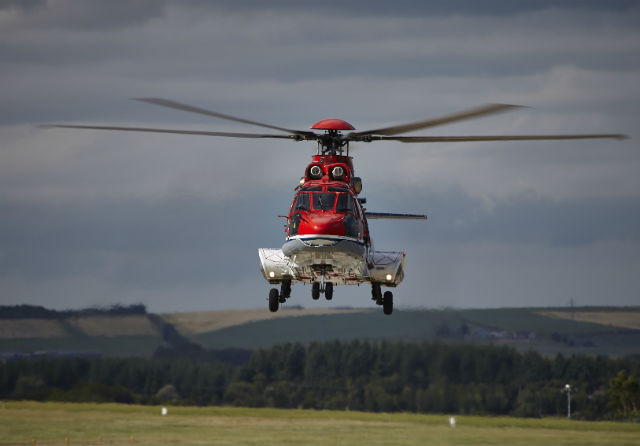Airbus Helicopters and officials from the Norwegian and UK civil aviation regulators met earlier this week to discuss the return-to-service path for the H225, sources indicate.
The 11t-class helicopter, and the related AS332 L2, remains grounded by the authorities in those two countries, despite European regulators lifting a ban imposed after a fatal accident in April 2016 in which 13 people were killed.
No details of the discussions have been revealed, however.
The Norwegian civil aviation authority (CAA) says its representatives, along with those from the UK, attended a meeting in Marigane on 10 January to discuss the H225.
Petter Haugen, acting director-general of the Norwegian CAA, says: “The purpose of the meeting was to exchange views regarding to the situation, and seek mutual knowledge and understanding.
“It was a constructive meeting with an open dialogue. We will continue co-operation and dialogue regarding short- and long-term measures.”
However, he stresses that it is “too soon” to say when Norway will lift its grounding of the Super Puma.
The UK CAA also confirmed H225s were on the agenda of routine discussion with the manufacturer, noting that its representatives “regularly meet with companies across the aviation sector to discuss a broad range of issues”.
“These frequent meetings are part of our ongoing programme of industry engagement and serve a number of purposes. Earlier this week representatives of the CAA met with Airbus Helicopters at the manufacturer’s headquarters, as part of this programme.”
Norwegian air accident investigators have yet to release their final report into the accident or identify a root cause for the catastrophic gearbox failure that doomed the H225 in April.

CHC Helicopter
Meanwhile, in a further sign of the H225’s rehabilitation, lessor Waypoint has placed a former offshore H225 with German operator Global Helicopter Service (GHS).
It intends to deploy the aircraft in Africa on contract work for non-governmental and humanitarian relief agencies – a market dominated by the Russian-built Mil Mi-8/17.
Dominik Goldfuss, chief executive of GHS, says he is “110% convinced” of the type’s safety. “There is nothing to fear in the H225’s overall safety record or that I have any concerns about,” he says. “As long as Airbus Helicopters is giving me confidence that they are doing everything to sort this problem I don’t have any issues.”
Goldfuss points to a large pool of available H225s, all drawn from the offshore industry; the airframe GHS will receive will require reconfiguration work, he says, “as we don’t need the offshore gear”.
He adds: “We are interested to get the aircraft flying again. That’s our approach.”
Its fleet is currently dominated by twin-engined Bell Helicopter 212s and 412s.
He describes the H225 as “extremely capable”, offering “more performance” than the AS332, another Airbus Helicopters product which has been pitched at the utility market.
In fact, the availability of H225s for lease at what are likely to be highly competitive rates poses a potential problem for the manufacturer. It has been trying to break into the utility market with the H215, a modernised version of the AS332 that it intends to build at a new site in Romania.
Updated with additional confirmation from UK CAA
Source: FlightGlobal.com


























